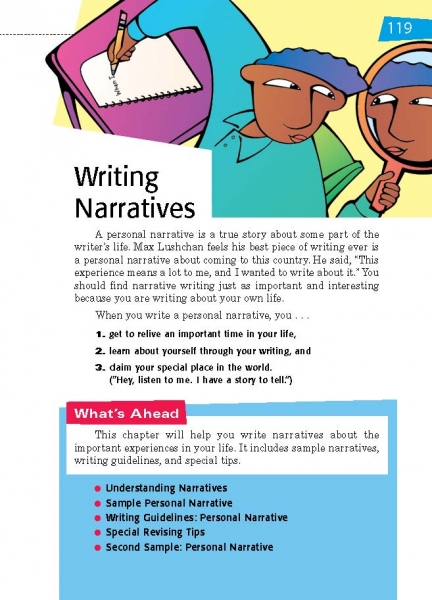Page 119 from

Start-Up Activity
The universe of discourse, as theorized by James Moffett, places narrative writing and journal writing as two of the most immediate and automatic forms of writing students can develop. This stands to reason, because both forms deal with topics related to students’ own lives. After reading and discussing page 119, display a sample journal entry or two (preferably your own) to identify possible topics for personal narratives. Then have students do the same by referring to their most recent journal entries.
Think About It
“Of all the subjects available to you as a writer, the one you know best is yourself; your past and your present, your thoughts and your emotions.”
—William Zinsser

Start-Up Activity
The universe of discourse, as theorized by James Moffett, places narrative writing and journal writing as two of the most immediate and automatic forms of writing students can develop. This stands to reason, because both forms deal with topics related to students’ own lives. After reading and discussing page 119, display a sample journal entry or two (preferably your own) to identify possible topics for personal narratives. Then have students do the same by referring to their most recent journal entries.
Think About It
“Of all the subjects available to you as a writer, the one you know best is yourself; your past and your present, your thoughts and your emotions.”
—William Zinsser






